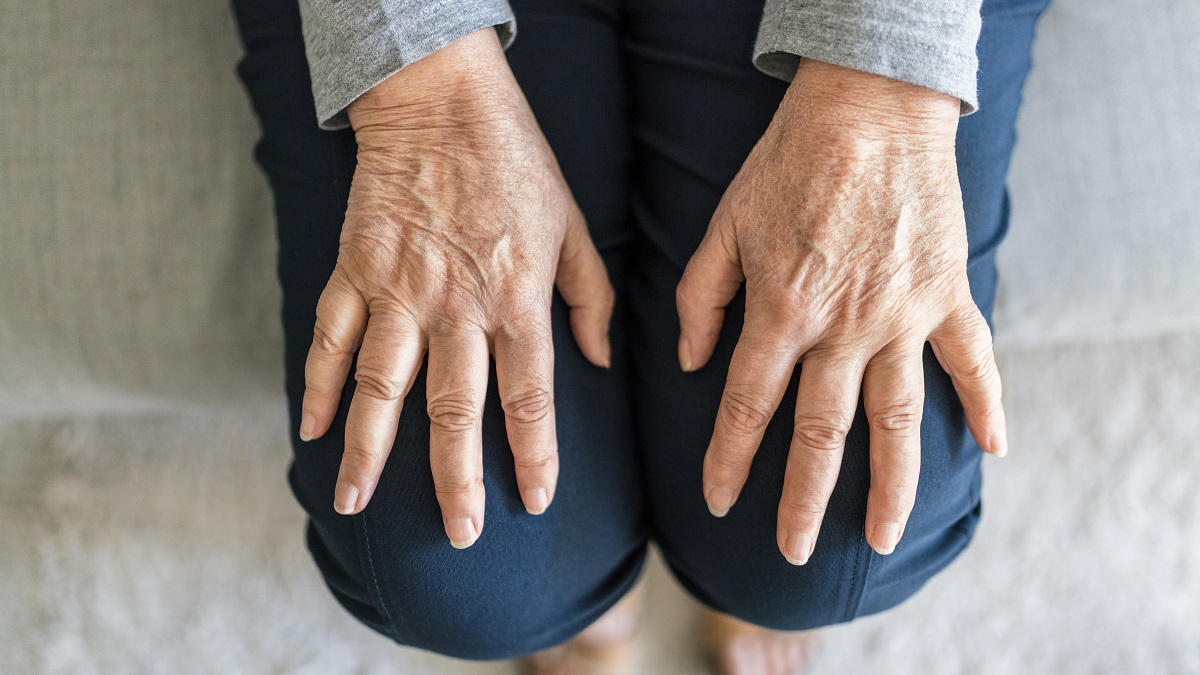In the fight against lower back pain, many people and their doctors reach for the same weapons: common over-the-counter (OTC) and prescription medications. New research on commonly recommended and prescribed lower back pain medications has found that many may actually be virtually ineffective for treating lower back pain and that medication for lower back pain may actually do more harm than good.
Click Here to Visit the Store and find Much More….
Over-the-counter medication for lower back pain
Nsaids are a standard go-to medication for lower back pain, but their effectiveness is being called into question. The common over-the-counter pain medications Tylenol, Advil, and Aleve are all types of nsaids. More powerful nsaids are also available by prescription from your physician. For many people with chronic back pain, it’s not unusual to keep a bottle of over-the-counter nsaids on hand to treat pain as needed.
A great many medications fall into the classification of nsaids, but all of them function in a similar way. Nsaids block an enzyme called cyclooxygenase (COX), which in turn inhibits the production of certain inflammatory responses like fever, swelling, and pain. Since many instances of pain are caused by inflammation or swelling, inhibiting inflammatory responses should reduce pain.
However, COX enzymes also aid in protecting the stomach lining, which is why using nsaids can sometimes lead to ulcers or bleeding in the stomach. Potential side effects of nsaids include digestive symptoms like heartburn, diarrhea, vomiting, or stomach pain.
Tylenol in particular has been widely advertised all over the world as a catch-all OTC medication for aches and pains of every variety. From acute back pain to achy knees and chronic pain, advertisements would have you believe that Tylenol is effective and safe for pain. A study from the BMJ (formerly the British Medical Journal) found that Tylenol’s claims of efficacy in the treatment of both back and knee pain were false.
A meta-analysis of randomized controlled studies focusing on Tylenol’s ability to relieve spinal pain and pain due to osteoarthritis found that for spinal pain, Tylenol showed no effect on pain in either short- or intermediate-term follow-ups. For osteoarthritis, the short-term efficacy of Tylenol for spinal pain was more pronounced than for intermediate use, but pain reduction was still rated as moderate. Any pain relief reported was clinically insignificant and similar to the placebo group. The studies included in the meta-analysis focused on just over 5,300 patients with lower back pain and knee pain and excluded any patients with previous surgeries for either condition.
Side effects of non-steroidal anti-inflammatory drugs
While some patients suffering from chronic and acute back pain may find that any minor reduction in pain is worth the risk, the side effects may not be worth it. Since 2011, the Food & Drug Administration has required medications that use acetaminophen to carry a “black box” warning that highlights its risk for liver failure.
Many who take Tylenol for pain do not realize that other medications (e.g. Cold medicines) also contain acetaminophen. Exceeding the maximum daily dose by even a small amount can cause serious side effects and may even cause death. For anything other than acute, short-term pain, taking Tylenol is not recommended as a medication for lower back pain.
Opioids are a narcotic pain reliever. Previously used primarily for short-term relief of acute pain, or for pain relief in patients with a chronic condition like cancer, opioids have become part of mainstream pain management over the last two decades. The number of prescriptions written for oral opioid medications, such as hydrocodone, oxycodone, or hydromorphone, has more than tripled over the last 20 years. Despite the risks associated with opioid medications, they are becoming increasingly widespread as a prescribed medication for lower back pain, even though new research suggests opioids aren’t very effective for this type of pain.
Opioids and spinal surgery risks
While the risks of opioids have been well-documented, a study by the American Academy of Pediatrics found that the use of prescription opioids is linked to fewer positive outcomes after spinal surgery. The study of just over 500 patients used patient reporting to measure health preoperatively and at three, six, and 12 months post-operatively. Differences in recovery, mental health, and decreased pain was significantly influenced by opioid use in the following ways:
Click Here to Visit the Store and find Much More….
- Patients who increased opioid use before spinal surgery did significantly worse post-operatively at three and 12 months
- For every ten milligrams of increase in opioid use, the study found a significant decrease in mental and physical health scores
- Patients who also suffered from comorbid conditions such as depression and anxiety were more likely to take opioids
Lead study author Clinton J. Devin, MD, assistant professor of orthopedic surgery and neurosurgery at the Vanderbilt Spine Center had this to say about the treatment implications of study’s findings:
“Our work highlights the importance of careful preoperative counseling with patients on high doses of preoperative opioids, pointing out the potential impact on long term outcome and working toward narcotic reduction prior to undergoing surgery.”
Even for those patients who choose not to undergo surgery, opioids have very little effect on chronic low back pain. While there seems to be some short-term analgesic benefit, the risk of dependence and other side effects likely outweighs the minimal benefit in intermediate- and long-term use for this medication for lower back pain.
Researchers have also been reevaluating the trials and evidence that support the effectiveness of opioid pain medications, and the evidence doesn’t hold up. The National Institutes of Health (NIH) convened a seven-member panel to examine the evidence for opioid medications. An article by the University of Connecticut summed up the results, noting:
“A National Institutes of Health white paper that was released today finds little to no evidence for the effectiveness of opioid drugs in the treatment of long-term chronic pain, despite the explosive recent growth in the use of the drugs.”
Additionally, a University of Colorado Boulder study showed that opioid use (specifically morphine) actually prolonged neuropathic pain in rats, suggesting that it could have the same effect on humans.
Finally, the BMJ published a clinical review of the efficacy of opioids as a medication for lower back pain. The conclusions in this article include:
- Opioids don’t speed injured workers’ return to work
- Opioids don’t improve functional outcomes of acute back pain in primary care
- There is little evidence of opioid efficacy for chronic back pain
It was also pointed out that controlled trials of opioids for back pain tend to experience a high dropout rate among participants. The trials also have a short duration (generally four months or less) and have highly selected patients. This all suggests that the controlled trials that do support opioid efficacy for back pain are perhaps not reliable, or at least are not thorough enough.
Opioids also have a high risk of abuse and dependence. Using opioids before spinal surgery has been linked to a higher risk of negative surgical outcome. Slow-acting opioids, which have been assumed to be safer than fast-acting opioids, have been shown to make men five times as likely to develop low testosterone. More and more evidence continues to point to the fact that opioids are not a suitable medication for lower back pain, unless used for highly-controlled, acute cases.
Steroids are commonly used to treat inflammation associated with back pain, but they may not be as effective as previously believed. Steroids, also called corticosteroids, are a synthetic (man-made) version of a hormone naturally found in the body. Steroids are used to treat many different conditions, largely because they are cost-effective and can be applied in many different forms (oral, injected, inhaled, topically, etc.). Long-term or illicit use of steroids is associated with several potentially-serious side effects, but when used as directed, steroids are generally considered safe.
In a randomized controlled trial of 267 people with herniated disc, researchers found that there was no significant difference in pain relief between the group receiving oral steroids (prednisone) and the group receiving a placebo. Both groups saw improvement, but even after a year, there was no difference between the two (except in rate of disability, which was slightly lower in the prednisone group).
Likewise, a study originally published in the Journal of the American Medical Association (JAMA) looked at the efficacy of the oral steroid prednisone in treating sciatica-related back pain. In this study, half the participants were given a 15-day course of prednisone to treat sciatica resulting from a herniated disc, while the other half were given placebos to treat the same condition. Although both groups’ symptoms improved, there were no statistically significant differences in pain or disability by the end of six weeks.
Again, this is a case of the side effects outweighing the negligible benefits. In addition to headache, mood swings, and irregular heartbeat, long-term use of prednisone is a risk factor for osteoporosis, which may increase the risk of spinal injury leading to pain. Steroid injections, on the other hand, provide a targeted approach to using these medications which may work more powerfully for lower back pain patients.
What are non-medication options for lower back pain?
With these common back pain medications increasingly debunked in the research, there are other treatment options to consider.
First, don’t stop your medication for lower back pain
Even with this research, this does not mean that you should stop your medication for lower back pain, especially if they’ve been prescribed by a physician.
If you’re taking a medication that relieves your symptoms of back pain, that’s great. Keep taking it. If your current medication doesn’t seem to be doing the job, keep taking it until you’re able to talk to your pain doctor and get an alternative medication or treatment (or are given the go-ahead to stop taking it). Stopping a medication prescribed by your doctor could be unsafe if you haven’t discussed it with them before.
Click Here to Visit the Store and find Much More….
And keep in mind that pursuing alternative, complementary, or interventional pain management techniques – either in conjunction with or (with your physician’s permission) instead of medication – might help you control your pain much more effectively than medication for lower back pain alone.
Staying physically active is an important treatment option for lower back pain. While it may seem counterintuitive to move when you are in pain, keeping your muscles strong and engaged can be the key to a healthy back. Focus on stretches and core work, but don’t forget low-impact cardiovascular exercise such as biking, swimming, and hiking.
Although it may not work as quickly as medication for lower back pain, eating a healthy diet full of anti-inflammatory foods can make a tremendous difference in treating chronic back pain. Adding these foods while eliminating common inflammation-causing foods like sugar, wheat, and dairy can help you manage pain.
The more weight we carry on our bodies, the more stress there is on our joints. Maintaining a healthy weight with diet and exercise can be an important part of treatment for back pain, especially in cases where back pain is due to compression injuries such as herniated discs or inflammation caused by spinal stenosis.
Acupuncture is gaining traction as an effective treatment for low back pain. Chiropractic care can also be an excellent first-line treatment that minimizes the chance of spinal surgery in the future. Mindfulness meditation and biofeedback have both been shown to diminish the perception of pain. All of these treatments are nearly side-effect free, and many are now covered by insurance.
Interventional pain management
Finally, if your pain doesn’t respond to medication for lower back pain or these complementary approaches, you could try more targeted therapies for resolving your back pain. This will involve identifying the underlying causes of your back pain and finding a therapy that can work to resolve or treat the symptoms of your pain. Once a correct diagnosis is made, your doctor may recommend any of the following therapies:
- Epidural steroid injections
- Lumbar facet block
- Lysis of adhesions
- Percutaneous discectomy
- Radiofrequency ablation
- Spinal cord stimulation
- Surgery

Click Here to Visit the Store and find Much More….
For More Information Related to Fibromyalgia Visit below sites:
References:
Fibromyalgia Contact Us Directly
Click here to Contact us Directly on Inbox
Official Fibromyalgia Blogs
Click here to Get the latest Chronic illness Updates
Fibromyalgia Stores


